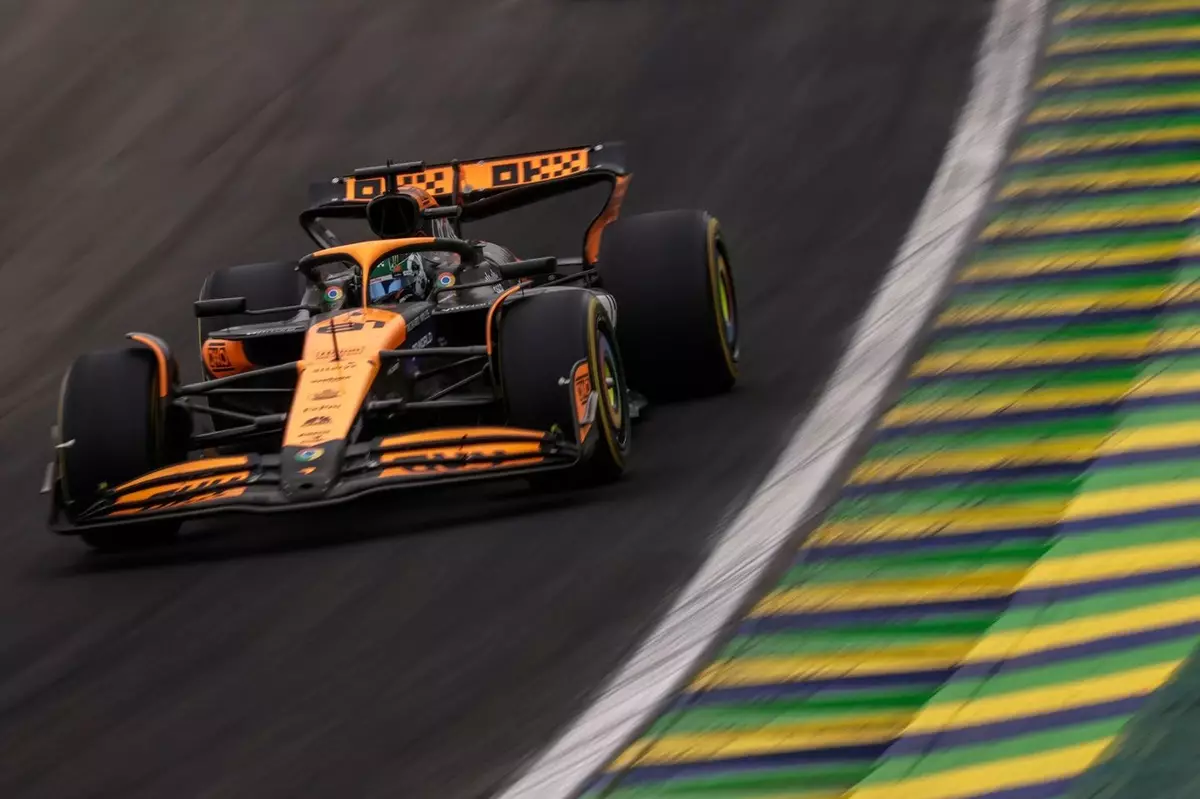The Brazilian Grand Prix sprint qualifying brought unexpected developments and fierce competition among the teams, showcasing a thrilling atmosphere on the track. Oscar Piastri of McLaren narrowly triumphed over his teammate Lando Norris, both securing outstanding positions at the top of the time sheets. Charles Leclerc from Ferrari followed closely in third, while Max Verstappen of Red Bull Racing secured the fourth position, highlighting the intense rivalry among these elite drivers.
What’s notable about McLaren’s performance during the sprint qualifying was the distinct approach they adopted compared to their competitors. The McLaren drivers, showing confidence and tactical prowess, took to the softer compound tires early, dominating the track amid changing conditions. As rain clouds threatened, temperatures dropped, making tire management and timing crucial. Piastri’s strategy proved effective, allowing him to optimize the handling of the freshly resurfaced track.
Norris initially made a powerful statement with a phenomenal lap time of 1m08.928s, showcasing his ability to adapt quickly. Piastri, however, demonstrated his competitive edge by closely following with a personal best of 1m08.899s, ensuring a McLaren front-row lockout. This performance not only showcased their speed but also their sharpness in executing their strategies—their early forays into SQ3 clearly gave them an edge over others who hesitated.
The session was not without its surprises, particularly with the exit of Lewis Hamilton in the second segment, a shocking outcome for fans and analysts alike. This was a clear indicator of the unpredictable nature of motorsport, where even seasoned drivers can falter. Hamilton, a veteran with multiple championships under his belt, struggled with pace amidst the rapidly evolving conditions. Similarly, Sergio Pérez faced challenges in his Red Bull, finishing a disappointing 13th after facing a variety of mechanical and strategic obstacles.
Oliver Bearman from Haas emerged as another notable mention, underlining the unpredictable nature of qualifying sessions. Despite showing impressive talent, his time was invalidated due to a mishap in the Senna S section of the track, where he pushed the limits and ultimately paid the price. Such moments reflect the razor-thin margin for error in Formula 1 and highlight the necessity for precision, even for emerging talent.
The qualifying rounds revealed just how competitive the midfield battle has become. The session continued to see the Grand Prix’s intensity rise as cars navigated their ways through the tricky asphalt, with Franco Colapinto managing to squeeze past Fernando Alonso for a shot beyond SQ1. Alonso, regarded as a seasoned competitor, found himself floundering alongside other top names like Esteban Ocon and Lance Stroll, who failed to make it past the first segment despite showing potential.
Interestingly, the midfield battle seemed to favor those who found their rhythm early. Russell, representing Mercedes, managed to secure a decent spot amongst fierce rivals, showcasing the brand’s resilience in this one-off qualifying event. However, the absence of Hamilton and Pérez from later stages further underscored the unpredictable twists that a single qualifying session can impart.
As preparations for the main race continue, McLaren’s dominant performance in sprint qualifying raises questions about their overall strategy and race pace. Their calculated risk in SQ3 may serve as a springboard for both drivers, reflecting a solid chance to capitalize on their front-row positions. Conversely, the disappointments encountered by other top contenders like Hamilton and Pérez will undoubtedly spur teams to reassess their strategies moving forward.
The Brazilian Grand Prix sprint qualifying has set the stage for an exhilarating race ahead, emphasizing the fierce competition and unpredictable nature of Formula 1. With McLaren standing at the forefront, the battle for points and positions looks more thrilling than ever, promising a race that could redefine standings and strategies as the championship progresses. Such dynamics illustrate why the sport continues to captivate audiences worldwide—it is never over until the checkered flag waves.

